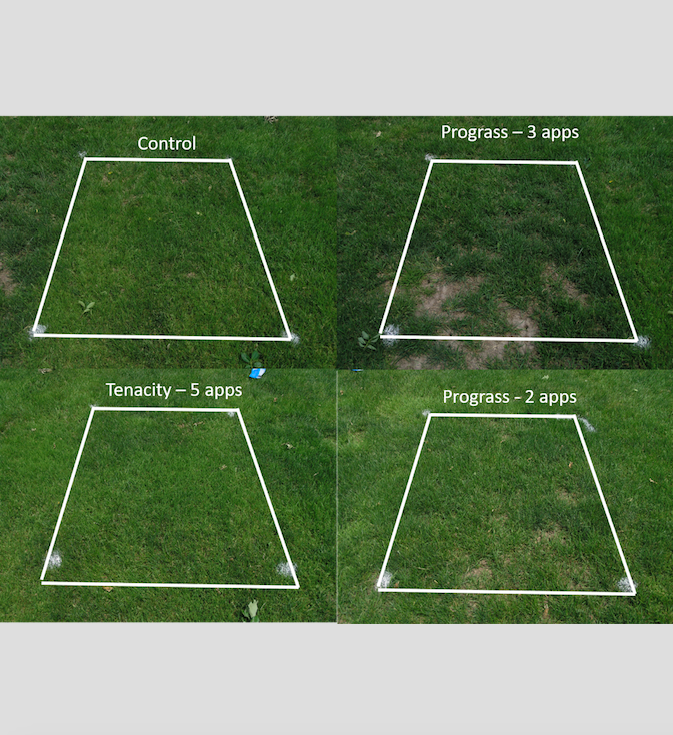By Doug Soldat, Ph.D., and Nick Bero
Control of annual bluegrass on athletic fields is a huge challenge for sports field managers in the Midwest and all over the world. Annual bluegrass is a light green, bunch type grass with a weak root system and poor stress tolerance. When soils become wet and compacted, desirable turf thins and annual bluegrass gains a foothold in these bare areas, which it will not easily relinquish. While it is classified as a winter annual in the handbooks, there are many biotypes that allow this weed to behave like an annual or perennial. Annual bluegrass can form a nice turf cover at certain times of the year, but because of its poor stress tolerance it is often not there for you when you need it most.
The long-term solution to an annual bluegrass invasion is to alter the growing conditions that are causing the desirable grass to thin. In most cases, these aren’t easy fixes. Rootzones might need to be replaced, drainage might need to be added, trees (that may not be on your property) might need to be cut down, or fields might need to be added to distribute the traffic effectively. When cultural fixes such as these are impossible or impractical, managers turn to chemical control practices to keep annual bluegrass in check. As the name suggests, annual bluegrass is closely related to Kentucky bluegrass, so finding an herbicide that controls annual bluegrass without killing the desirable Kentucky bluegrass is difficult. A handful of partial or conditional chemical control options exist, but the industry is still searching for a silver bullet. To get a better handle on how the various chemical control options perform, the Wisconsin Sports Turf Managers Association (WSTMA) funded a study to evaluate different combinations, timings and rates of three herbicides (Prograss, Xonerate, and Tenacity) for the control of annual bluegrass in a Kentucky bluegrass athletic field.
Materials and methods
This study was conducted on a silt loam Kentucky bluegrass practice athletic field infested with annual bluegrass at Oregon High School in Oregon, Wis. We sincerely appreciate the assistance of Ron Novinska (2012 STMA Football Field of the Year Winner) for allowing us access and maintaining the site during the trial. The trial began during the fall of 2018 and continued through the 2019 season. The study was designed as a randomized complete block design with eight treatments and four replications (Table 1). It would be impractical to evaluate all possible rates and timings and tank mixes, so we worked with the WSTMA to pick a reasonable number of combinations that we felt would provide useful information. Individual plots measured 6 feet x 4 feet. The herbicides were applied using a CO2-powered backpack sprayer calibrated to deliver 86 gallons per acre. Approximately twice per month, we evaluated the percent cover of annual bluegrass, desirable turf, and bare soil. We also assessed any injury to desirable turf on a 0 to 9 scale with 0 being no injury and 9 being complete turf death. Treatment means were separated using Fisher’s Least Significant Difference at alpha = 0.05.
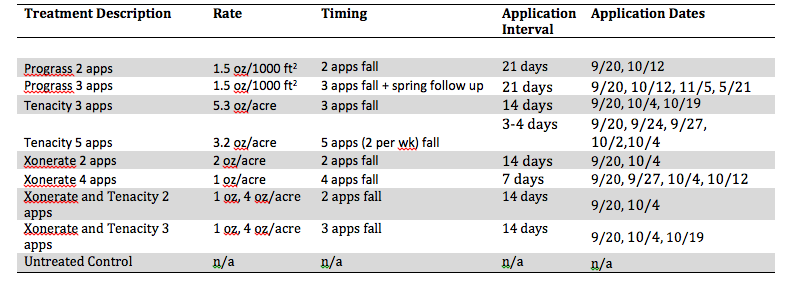
Table 1. Treatments and application rates for the products used in the trial.
Annual bluegrass change over time
Annual bluegrass comprised about 70% of the plot area on the study site at the onset of the trial, with the remaining 30% consisting of Kentucky bluegrass. The trial was located on the south end of the athletic field, near a tree line that partially shaded the plots. From Figure 1, you can see that all the chemical programs reduced annual bluegrass cover to less than 50% by the following spring. However, at the end of the evaluation period in July 2019, the percentage of annual bluegrass was highly variable depending on the chemical treatment. The most effective chemical treatment was the three fall applications and one spring application of Prograss, which had single digit levels of annual bluegrass in July. The next group, which was moderately effective against annual bluegrass, consisted of a group of four treatments including both of the Tenacity treatments, the treatment with two fall applications of Prograss, and the treatment consisting of three applications of Xonerate and Tenacity. In this group, annual bluegrass coverage ranged from 20% to 35%, showing a reduction in annual bluegrass populations of 50% or more. The remaining three treatments, which all contained Xonerate, were not very effective at controlling annual bluegrass under the conditions of this study with annual bluegrass coverage above 50% by July 2019 – less than 30% weed control. For those that want to dig deeper, all data from Figure 1 and statistical differences are shown in Table 2.
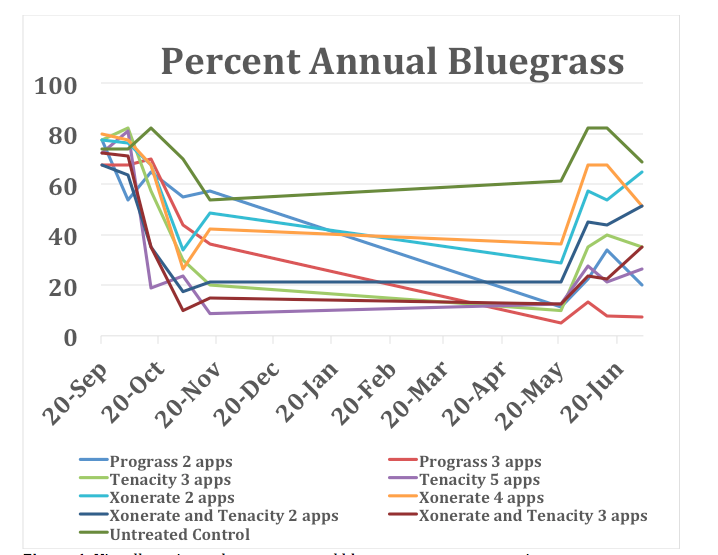
Figure 1.Visually estimated percent annual bluegrass coverage over time as affected by chemical treatment.

Table 2.Visual estimate of annual bluegrass cover by date during the study. Different letters indicate statistically significant differences (p = 0.05).
Other considerations
In addition to understanding how the chemical treatments affected the annual bluegrass, we wanted to evaluate their impact on the desirable turf. Chemical control of annual bluegrass is difficult because of the genetic similarities it shares with desirable grasses, so we also quantified the impacts of the applications on the Kentucky bluegrass. The only substantial injury we observed in this trial was from the treatments containing Tenacity (Figure 2). Tenacity injury is unique, and while it did not result in death of the desirable Kentucky bluegrass, it turned some of the plants white, reaching unacceptable levels of injury for three of the Tenacity treatments around four weeks after the initial application. However, all Tenacity-treated turf had acceptable levels of injury at six weeks after initial application and after.
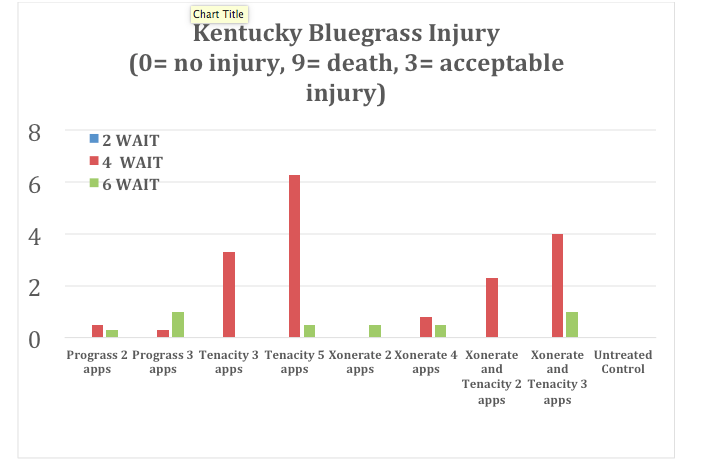
Figure 2. Kentucky bluegrass injury as affected by treatment. The injury scale is 0 – 9, with any injury above 3 considered unacceptable. WAIT = weeks after initial treatment.
Please note that Prograss can be damaging to certain Kentucky bluegrass varieties. The Prograss label lists varieties of Kentucky bluegrass and perennial ryegrass that can endure the herbicide, and singles out several varieties of Kentucky bluegrass that cannot endure the application. None of the mentioned varieties on the label matched with varieties that Novinska regularly uses for overseeding. Because of the large amount and ever-changing grass varieties on the market, this is likely to be the case for many potential Prograss users. Make sure you consult the label and test the application on a small area before implementing a program. In addition, it is important to know that Prograss has post-emergent and pre-emergent weed control properties. Kentucky bluegrass cannot be seeded until six weeks after a Prograss application. This restriction makes the logistics of an overseeding more challenging compared to a program with Tenacity or Xonerate.
When selecting a chemical control strategy on an area with a high percentage of annual bluegrass, you should also consider how the field will look as the annual bluegrass is being controlled. When we evaluated the Kentucky bluegrass injury and percent cover by annual bluegrass, we also evaluated the amount of bare soil visible. We saw large differences in bare soil among the chemical control options in the fall (Figure 3). The Tenacity treatments rapidly reduced annual bluegrass levels, which resulted in high amounts of bare soil. In contrast, the treatment consisting of two fall applications of Prograss resulted in very little bare soil in the fall and quite similar levels of bare soil as the Tenacity treatments in spring. The Prograss program with three fall applications and one spring application had the greatest amount of bare soil by the end of the trial (see photo at top), but was also the most effective chemical control program in the trial.
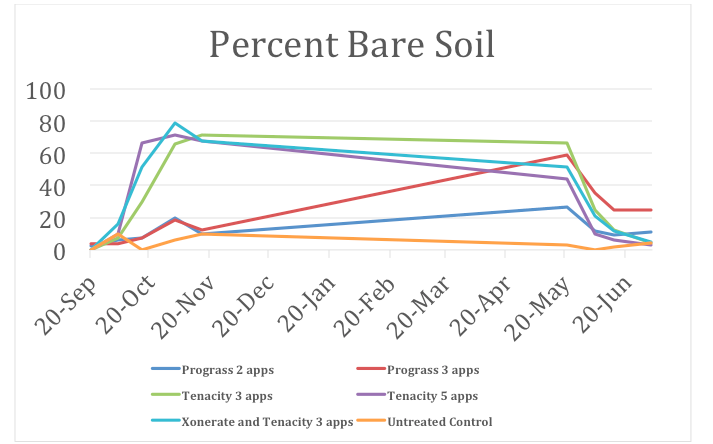
Figure 3.The percent bare soil over the study period as affected by the five most effective annual bluegrass control options evaluated in this trial.
All things considered, the two Prograss treatments (two fall applications or three fall applications plus 1 spring application) were the most effective under the conditions of this study. They provided a high level of control with little observed injury of the desired turfgrass. Prograss also appeared to work more slowly than the other effective chemical in this trial (Tenacity), which resulted in less bare soil in the fall with Prograss treatments. The five fall applications of Tenacity provided a good level of control by the following July, however, and should not be written off. In this trial, treatments containing Xonerate did not appear to be effective for controlling annual bluegrass. However, keep in mind that these results are specific to this location, soil, and grass varieties and results may differ for your area. Contact your local turfgrass extension specialist for the best annual bluegrass chemical control options in your area.
Doug Soldat, Ph.D., is a professor in the Department of Soil Sciences, University of Wisconsin-Madison; Nick Bero, MSc, is a research assistant for the department.
Top photo:Pictures from June 14, 2019 of some plots from some of the better performing treatments in the study relative to the non-treated control plot.


